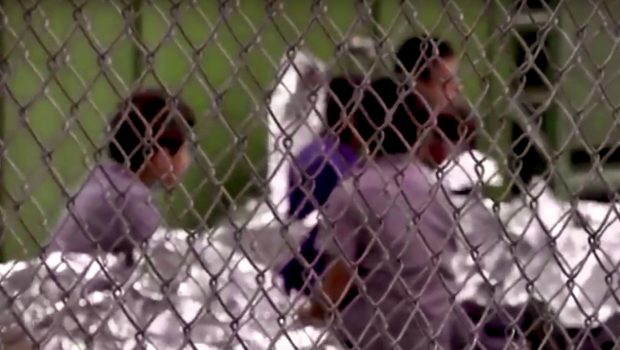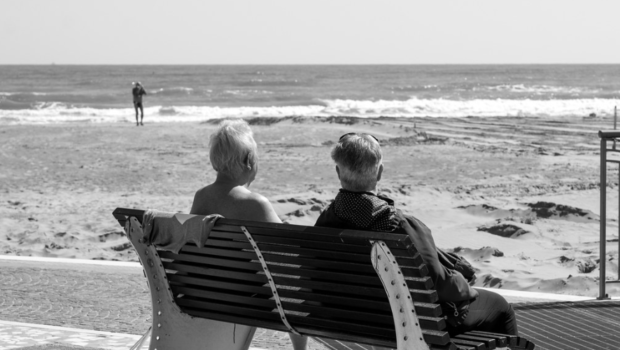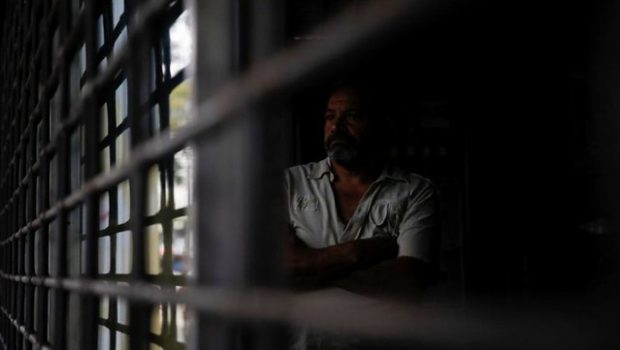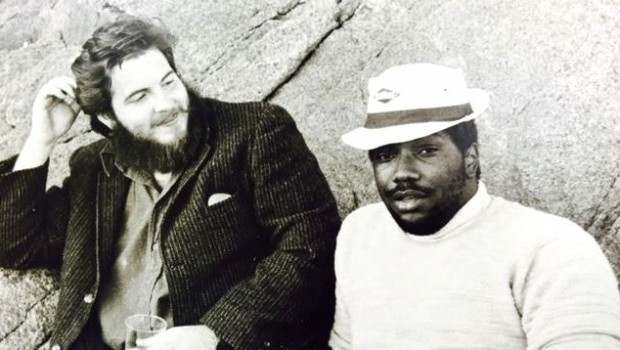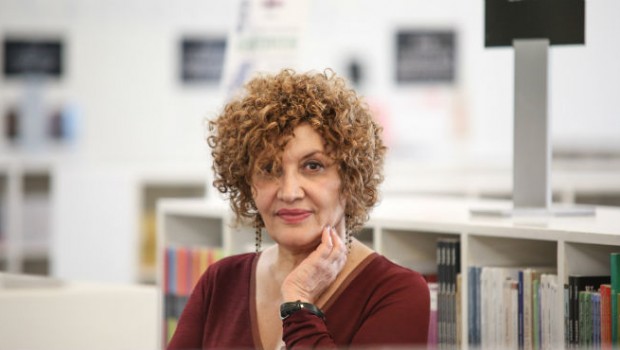Detention Centers
Centros de detención
Helena García Mariño
Language is another form of violence. Euphemisms are one of the ways through which language exerts violence. In his essay, Wittgenstein’s Dictionary, John Willinsky wrote, “the schooled representation of meaning sets language in the hands of those who hold the proper definitions.” Language is not innocent, it´s used for certain political purposes. In the case of the names given to the places where immigrants are locked up before deportation, language imitates a mask that covers reality to make it softer, more bearable. Hidden behind it lays the world as it is, protected by a layer resistant to the world that could be.
Detention centers in the southern border of the US have been a major focal point of national and international media the past four weeks. There are contradictory numbers: while the Department of Homeland Security said that a total of 1,995 children were separated from their parents at the U.S.-Mexico border, alternative sources like the Washington Examiner state that almost 2,000 children are reportedly already being held.
Over the past few weeks, I´ve seen hundreds of pictures of children locked up in cells/cages, of buses transporting adults to the centers. Looking at the images is startling, but only involves one of the senses. Within the metropolitan area of Madrid, where I was born and lived until three years ago, these centers also exist, but most of the population is unaware of their existence because they are hidden within the urban landscape. I’ve been inside them, I know how they smell, what kind of noises come out of the cells, how the iron bars feel under the fingers. Being inside requires the complete use of the five senses, the five senses superimposing and completing each other, creating the scene in its entirety. It’s terror over terror over terror. It’s the landscape of horror.
In 2013, I spent three months doing an internship in a law firm that worked with, among other things, Immigration Law. I made a few visits to the Aluche center to represent several detainees. “Express deportations” had just been introduced this very same year. I quote one of the policemen who worked there: “we catch them in the streets. No papers. We arrest them, detain them and in less than 72 hours they are sent back to their countries”. These express deportations have been brought to the European Court of Human Rights by several organizations. On countless occasions, the detainee isn´t given the possibility to collect her or his belongings, and sometimes even she or he isn´t allowed to tell her or his family that she or he is being deported. In Spain -for the time being- children are not locked up, but they are separated from their families: migrants are deported even when they are the only family member residing in the country and have minor children depending on them.
In the United States, they are called “detention camps”, almost the same term we use in Spain: Centros de Internamiento de Extranjeros (CIEs). The reasons for the arrest and detention of these migrants are broadly similar: foreigners admitted to the CIES aren´t in a regular situation in the Spanish territory, in accordance with the laws of my country. According to Article 53.1a of the Organic Law 4/2000, the reasons for this irregularity may be due to the fact that the foreigner person doesn´t have an extension of stay, doesn´t have a residence permit or has had his residence permit expired more than three months ago. The purpose of admission to the center, according to the Law, is to prevent the alien from not appearing while the corresponding expulsion proceedings are being processed. It is here where the first major problem of the CIEs´ functioning (and of its very existence) arises, where germinates the unequal and unconstitutional treatment to which these persons are subjected: internment in the CIE is a measure that deprives people of preventive liberty, carried out within the framework of an administrative sanctioning procedure. Let us move from abstraction to the concrete: the situation, legally, is equivalent to being stopped by the police for speeding, having the corresponding record opened, and being put in jail until we finally see if one is punished.
On numerous occasions, International Amnesty has criticized the treatment of inmates in the Spanish CIEs. It has also launched the “Stop Racism, Not the People” campaign, which denounces the increasing police practice of making people prove their identity based solely on racial or ethnic characteristics, and several unlawful behaviors during the transfer of a person to and while in detention in a CIE. These two denounced realities are undeniably linked. The police officers responsible for carrying out these “racist raids” (as they are commonly known) have, in many cases, been ordered by their superiors to carry out a certain number of identity checks on persons who appear to be foreigners (obviously based only on their physical appearance), in order to correctly comply with the “detention quotas”. In many cases, these raids end with the transfer of one or more of the identified ones to a CIE. The situation is similar in the United States.
In the USA, they are called “detention camps”, almost the same term we use in Spain: Centros de Internamiento de Extranjeros. Both names are too long, a waste of characters that serves one ultimate purpose: to avoid using the word “prison”. Both Spanish and U.S. law requires a series of specific judicial procedures for a person to be placed in prison, procedures that aren´t followed in the case of the imprisonment of these migrants. The rhetoric Trump’s cabinet has been using for the past few months serves a twofold goal: it takes a legal detour and sweetens reality.
A similar movement arises when it comes to detainees. Numbers are given, they are referred to as “immigrants” or they are grouped into broad categories (Mexicans, Central Americans, Latin Americans). That´s why we need first names first. First names before adjectives, before numbers. A story, a body and a name. Marco Antonio Muñoz committed suicide in his cell two weeks ago, less than 24 hours after being separated from his wife and three-year-old son by the Border Patrol. Marco Antonio Muñoz. Not a Honduran, not a Honduran immigrant, not a Honduran ilegal immigrant. Marco Antonio Muñoz. And, like him, so many others. The multiplication of stories, bodies, names.
So, we’ve got the numbers. But a number doesn’t drag with it a face, a body, a story. Statistics are useful for covering this terror, but numbers don´t individualize us. That’s why we need to repeat the names. In times like these, to call a spade a spade is an act of resistance: they are not centers, they are prisons. They are not immigrants, they are human beings. Language is a double-edged sword that can play a fundamental role in the status quo´s persistence, but precisely because of its ambivalent nature we are allowed to mutate it, change it and turn it into the weapon that destroys all the previous rhetoric that masks reality. We have the power to see the horror, to name it and then to (re)build the architecture of the world.
 Helena García Mariño is an author and she is currently studying her PhD in creative writing.
Helena García Mariño is an author and she is currently studying her PhD in creative writing.
© Literal Publishing.
El lenguaje es otra forma de violencia. El eufemismo es una de las formas con las que el lenguaje ejerce violencia. En su ensayo “Wittgenstein’s Dictionary,” John Willinsky dijo que “la representación puramente académica sitúa al lenguaje en manos de los que establecen cuáles son las definiciones apropiadas”. El lenguaje no es inocente: está al uso de determinados fines políticos y, en el caso de los nombres que se les da a los lugares en los que se encierra a los inmigrantes antes de su deportación, imitan la máscara con la que se cubre la realidad para hacerla más suave, más soportable. Y detrás de ella esconden el mundo que es y generan una capa resistente al mundo que podría ser.
Estas últimas semanas, los centros de detención de inmigrantes en el sur de Estados Unidos han tenido un lugar prioritario en la prensa. Se habla de números, se dan cifras contradictorias: once mil quinientos niños separados de sus familias según el Washington Examiner, frente a los casi dos mil que reconoce el Department of Homeland Security.
Durante estas últimas semanas, he visto cientos de fotografías de niños encerrados en celdas/jaula, de autobuses trasladando a adultos a los centros. Ver las imágenes es escalofriante, pero sólo involucra a uno de los sentidos. Dentro del área metropolitana de Madrid, mi ciudad natal y donde viví hasta hace tres años, también existen estos centros, pero la mayor parte de la población desconoce su existencia porque están ocultos en el paisaje urbano. He estado dentro. Sé cómo huelen, cuáles son los ruidos que salen de las celdas, cómo se sienten las rejas en las yemas de los dedos. Son los cinco sentidos superponiéndose y completándose, creando la escena en su totalidad. Es terror sobre terror sobre terror. Es el paisaje del espanto.
En 2013, pasé tres meses haciendo prácticas de abogacía en un despacho que llevaba, entre otras cosas, extranjería. Hice varias visitas al centro de Aluche para representar a varios detenidos. Ese mismo año acababan de implantarse las “devoluciones express”. Cito a uno de los policías que trabajaban allí: “los pillas por la calle sin papeles, los detienes, calabozo y en menos de 72 horas están de vuelta en su país. Al Estado le cuesta dinero mantenerlos aquí dentro”.
Estas expulsiones express han sido llevadas ante el Tribunal de Estrasburgo por varias organizaciones defensoras de los Derechos Humanos. En incontables ocasiones, al detenido no se le da la posibilidad de recoger sus pertenencias, y a veces incluso no se le permite que comunique a su familia que va a ser deportado. En España no se encierran niños –de momento– pero sí se les separa de sus familias: se deporta a las personas migrantes, incluso cuando son el único miembro de la familia residiendo en el país y tienen hijos menores a su cargo.
Los motivos por los que se detiene y se encierra a estas personas migrantes, a grandes rasgos, es similar: las personas extranjeras ingresadas en los CIES no se encuentran en situación regular en territorio español, de acuerdo con las leyes de este país. Según el artículo 53.1a de la Ley Orgánica 4/2000, los motivos de esta irregularidad pueden deberse a que la persona extranjera no disponga de una prórroga de estancia, carezca de una autorización de residencia o tenga caducada, desde hace más de tres meses, dicha autorización. El ingreso en el centro, según recoge la Ley, tiene la finalidad de impedir la incomparecencia del extranjero mientras se está tramitando el expediente de expulsión correspondiente. Es aquí donde nace el primer gran problema del funcionamiento de los CIES (y de su existencia misma), donde germina el trato desigual y anticonstitucional al que son sometidas estas personas: el internamiento en el CIE es una medida privativa de libertad preventiva, llevada a cabo en el ámbito de un procedimiento sancionador administrativo. Pasemos de la abstracción a lo concreto: la situación, legalmente, es equivalente a que a uno le parase la policía por exceso de velocidad, le incoara el expediente correspondiente y de paso le metiese en la cárcel hasta ver si finalmente se le sanciona.
Amnistía Internacional ha criticado en numerosas ocasiones el trato que reciben los internos en los CIEs españoles. También ha impulsado la campaña “¡Parad el racismo, no a las personas!”, que denuncia la cada vez más frecuente práctica policial de escoger a personas para comprobar su identidad basándose únicamente en sus características raciales o étnicas y los comportamientos contrarios a la ley que se llevan a la práctica durante el traslado de una persona a un CIE y mientras esta persona está recluida dentro de él. Estas dos realidades que denuncia la organización en la campaña están innegablemente ligadas. Los policías encargados de llevar a cabo estas “redadas racistas” (nombre por el que comúnmente se las conoce) han recibido, en muchos casos, órdenes por parte de sus superiores para llevar a la práctica un número determinado de controles de identidad a personas que parecen extranjeras, para cumplir así correctamente con las “cuotas de detenciones”. En numerosas ocasiones estas redadas concluyen con el traslado de uno o varios de los identificados a un CIE. La situación es idéntica en Estados Unidos.
Así que en Estados Unidos se les llama “detention camps”, casi el mismo término que utilizamos en España: Centros de Internamiento de Extranjeros. Ambos son nombres demasiado largos, un derroche de caracteres que sirve a un propósito último: evitar utilizar la palabra “cárcel”. Tanto en el derecho español como el estadounidense, para que una persona sea ingresada en prisión debe pasar por una serie de procedimientos judiciales específicos que no se siguen en el caso del encierro de estas personas migrantes. La retórica que el gabinete de Trump lleva utilizando estos meses cumple un objetivo doble: toma un desvío legal y dulcifica la realidad a ojos de la opinión pública.
Sucede lo mismo cuando se habla de las personas detenidas. Se dan números, se habla de “inmigrantes” o se les agrupa en colectivos (los mexicanos, los centroamericanos, los latinoamericanos). Así que, frente a esto, necesitamos los nombres propios primero. Los nombres propios antes que los adjetivos, antes que las cifras. Una historia, un cuerpo y un nombre. Marco Antonio Muñoz se suicidó en su celda hace dos semanas, menos de veinticuatro horas después de ser separado de su mujer y de su hijo de tres años por la Border Patrol. Marco Antonio Muñoz. No un hondureño, no un inmigrante hondureño, no un inmigrante ilegal hondureño. Marco Antonio Muñoz. Y como él, tantos otros. La multiplicación de historias, cuerpos, nombres.
Tenemos las cifras. Pero un número no arrastra consigo una cara, un cuerpo, una historia. La estadística es útil para abarcar el horror, pero las cifras no nos individualizan. Por eso necesitamos repetir los nombres. En tiempos como éste, llamar a las cosas por su nombre, recurrir al verbo desnudo, es un acto de resistencia: no son centros, son cárceles. No son inmigrantes, son personas. El lenguaje un arma de doble filo que puede jugar un papel fundamental para la pervivencia del statu quo, pero que precisamente por su cualidad de ambivalencia permite que podamos mutarlo, trastocarlo y convertirlo en el arma que arrase con toda la retórica anterior. Tenemos el poder de ver el horror, de nombrarlo y, después, de (re)construir la arquitectura del mundo.
 Helena García Mariño. Licenciada en Derecho y Ciencias Políticas por la Universidad Autónoma de Madrid y en Teoría de la Literatura y Literatura Comparada por la Universidad Complutense de Madrid. Hoy es estudiante en el MFA en el programa de Escritura Creativa en Español en la Universidad de Iowa.
Helena García Mariño. Licenciada en Derecho y Ciencias Políticas por la Universidad Autónoma de Madrid y en Teoría de la Literatura y Literatura Comparada por la Universidad Complutense de Madrid. Hoy es estudiante en el MFA en el programa de Escritura Creativa en Español en la Universidad de Iowa.
© Literal Publishing. Queda prohibida la reproducción total o parcial de esta publicación. Toda forma de utilización no autorizada será perseguida con lo establecido en la ley federal del derecho de autor.


